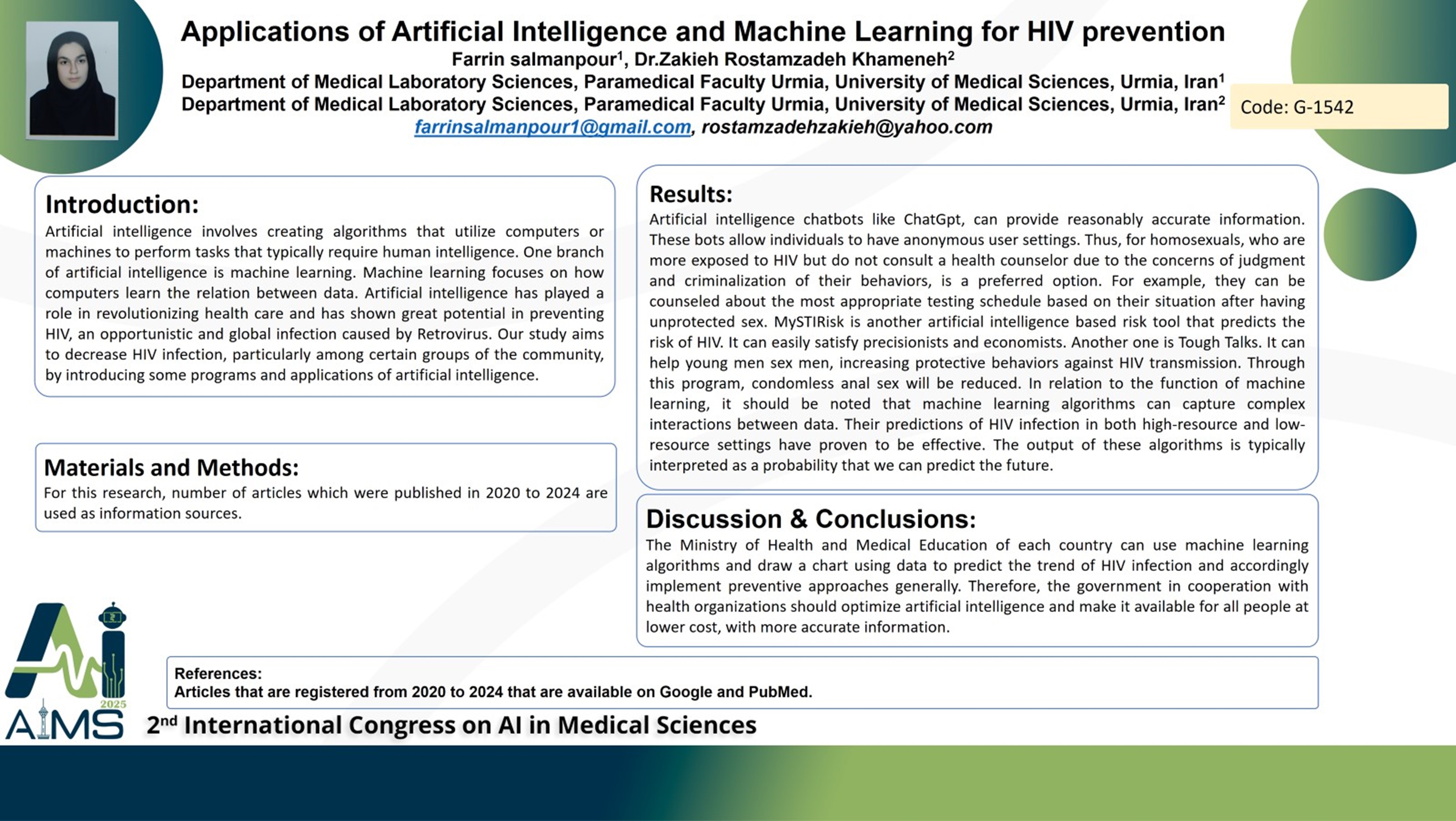Applications of Artificial Intelligence and Machine Learning for HIV prevention
Code: G-1542
Authors: Farrin Salmanpour * ℗, Dr.Zakieh Rostamzadeh Khameneh
Schedule: Not Scheduled!
Tag: Intelligent Virtual Assistant
Download: Download Poster
Abstract:
Abstract
Background and aims: Artificial intelligence involves creating algorithms that utilize computers or machines to perform tasks that typically require human intelligence. One branch of artificial intelligence is machine learning. Machine learning focuses on how computers learn the relation between data. Artificial intelligence has played a role in revolutionizing health care and has shown great potential in preventing HIV, an opportunistic and global infection caused by Retrovirus. Our study aims to decrease HIV infection, particularly among certain groups of the community, by introducing some programs and applications of artificial intelligence. Method: For this research, number of articles which were published in 2020 to 2024 are used as information sources. Results: Artificial intelligence chatbots like ChatGpt, can provide reasonably accurate information. These bots allow individuals to have anonymous user settings. Thus, for homosexuals, who are more exposed to HIV but do not consult a health counselor due to the concerns of judgment and criminalization of their behaviors, is a preferred option. For example, they can be counseled about the most appropriate testing schedule based on their situation after having unprotected sex. MySTIRisk is another artificial intelligence based risk tool that predicts the risk of HIV. It can easily satisfy precisionists and economists. Another one is Tough Talks. It can help young men sex men, increasing protective behaviors against HIV transmission. Through this program, condomless anal sex will be reduced. In relation to the function of machine learning, it should be noted that machine learning algorithms can capture complex interactions between data. Their predictions of HIV infection in both high-resource and low-resource settings have proven to be effective. The output of these algorithms is typically interpreted as a probability that we can predict the future. Conclusion: The Ministry of Health and Medical Education of each country can use machine learning algorithms and draw a chart using data to predict the trend of HIV infection and accordingly implement preventive approaches generally. Therefore, the government in cooperation with health organizations should optimize artificial intelligence and make it available for all people at lower cost, with more accurate information.
Keywords
Artificial Intelligence, HIV, Machine Learning
